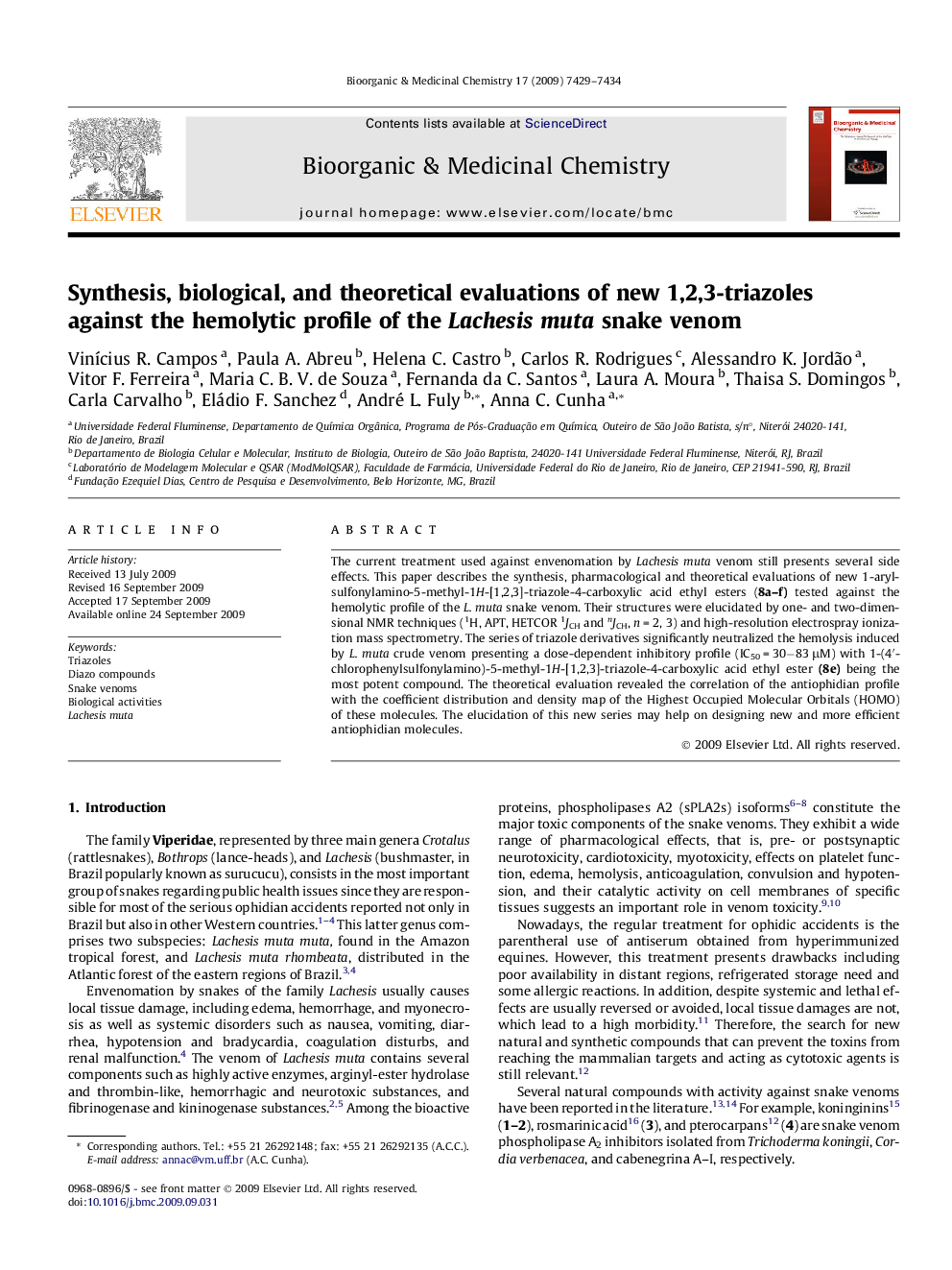| کد مقاله | کد نشریه | سال انتشار | مقاله انگلیسی | نسخه تمام متن |
|---|---|---|---|---|
| 1359819 | 981417 | 2009 | 6 صفحه PDF | دانلود رایگان |

The current treatment used against envenomation by Lachesis muta venom still presents several side effects. This paper describes the synthesis, pharmacological and theoretical evaluations of new 1-arylsulfonylamino-5-methyl-1H-[1,2,3]-triazole-4-carboxylic acid ethyl esters (8a–f) tested against the hemolytic profile of the L. muta snake venom. Their structures were elucidated by one- and two-dimensional NMR techniques (1H, APT, HETCOR 1JCH and nJCH, n = 2, 3) and high-resolution electrospray ionization mass spectrometry. The series of triazole derivatives significantly neutralized the hemolysis induced by L. muta crude venom presenting a dose-dependent inhibitory profile (IC50 = 30−83 μM) with 1-(4′-chlorophenylsulfonylamino)-5-methyl-1H-[1,2,3]-triazole-4-carboxylic acid ethyl ester (8e) being the most potent compound. The theoretical evaluation revealed the correlation of the antiophidian profile with the coefficient distribution and density map of the Highest Occupied Molecular Orbitals (HOMO) of these molecules. The elucidation of this new series may help on designing new and more efficient antiophidian molecules.
This paper describes the synthesis, pharmacological and theoretical evaluation of new 1-arylsulfonylamino-5-methyl-1H-[1,2,3]-triazole-4-carboxylic acid ethyl esters 8a–f against the hemolytic profile of the Lachesis muta snake venom. All the compounds were able to neutralize hemolytic property of venom.Figure optionsDownload as PowerPoint slide
Journal: Bioorganic & Medicinal Chemistry - Volume 17, Issue 21, 1 November 2009, Pages 7429–7434